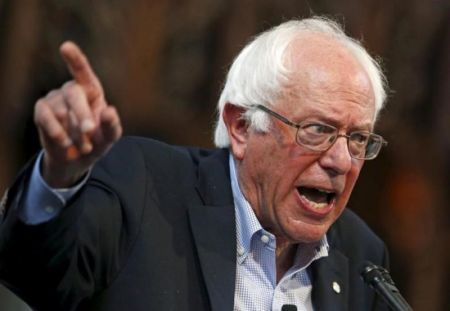What to know about the monetary theory favored by US socialist politicians

Modern Monetary Theory, or MMT as it is known, is in the news a lot these days. Socialist Democrat politicians such as Bernie Sanders and Alexandria Ocasio-Cortez have embraced MMT. They use the theory as reason why they don’t need to bother with troublesome questions about how to pay for all the “free stuff” they are promising. However, leading mainstream economists on both the left and the right are concerned about the bias to inflation that is built into MMT. In testimony to Congress last week (and sure to come up again this week in Senate testimony) Fed Chair Jay Powell said the theory “I think is just wrong”.
Once Socialist Democrats discovered MMT could be useful, MMT started to gain the attention that has eluded it for over 100 years. The MMT concept, called Chartalism at the time, was originated by Georg Friedrich Knapp in 1905. Abba Lerner developed ideas further in a 1947 paper “Money as a Creature of the State”. The ideas of Chartalism were developed to free the state from the constraints of gold-backed money, the world standard at that time.
MMT has been slowly gaining academic attention since the last vestiges of the gold standard were eliminated by President Nixon in 1971. The breakthrough for MMT came when Bernie Sanders’ populist ideas took the Democrats by storm in 2016. A rising tide of support for socialism is putting MMT firmly in the spotlight. MMT is the academic argument that seemingly allows Socialist ideas to spring free from the discipline of traditional monetary theory. But what is MMT, and should we be concerned about it?
As a monetary theory, MMT is straightforward. It starts with the fact that the dollar is a fiat currency; i.e., the dollar has no value in itself such as a gold-backed dollar would have. MMT claims the value of the dollar is that it can be used to pay taxes, which if unpaid would cause the state to punish you. Dollars, unlike gold, can be created by the government. Since the United States controls its own currency, it cannot default on its debts. It can simply create more dollars as needed. This is certainly true in a fiat currency world.
The obvious problem is the temptation to print so many dollars that inflation spirals out of control. Not to worry, say the MMT proponents. The government will control inflation pressures by simply spending less or taxing more. (I’m certainly comforted by this assurance, aren’t you?)
Much of what has been written about MMT is “inside baseball” stuff. Economists arguing the merits of an MMT perspective or the traditional monetary theory (or even old school gold standard theory). From my economic point of view, for what it’s worth, MMT would quickly face the same “Laffer curve” limit on taxes that politicians face today. Then it becomes a question of Congressional self-control or an inflation spiral.
No, in my view the real danger of MMT is political. Money is power. At the founding of this republic, money consisted of gold and silver. Politicians were Constitutionally limited to spend only what they could obtain by taxation (or borrow against the creditworthiness of future tax collections). Gold-based money was a fundamental limitation on the power of the government. Power was in the hands of the people. Politicians had to convince the people to give them the money/power they wanted.
Nixon ended the gold-backed system in 1971 and inflation soared in the 1970s. Congress realized they needed a new regime to control the value of the dollar. President Carter signed into law the Humphrey-Hawkins Act in 1978, which established a regime for the Fed to control the value of the dollar. In setting up the new regime, Congress attempted to create a system that would result in “sound money”; money that would have the full faith and confidence of the people. There were two main institutional structures to the new regime. First, the Fed would continue to operate independently of Congress, protected from political pressure. Secondly, the Fed was charged to control the creation of money to achieve low inflation, low interest rates and low unemployment. This mandate has guided Fed actions since.
The Humphrey-Hawkins regime preserves the appearance and mechanisms of sound money, like gold-backed money. Congress must ask the people for power (money) through the vehicle of taxation. Congressional ability to borrow is limited by the ability of future governments to tax future households. To the extent that the Fed truly does act independently and does control inflation, then the dollar is sound money. But the events of the last decade call that faith into question. The Fed financed trillions of dollars of deficits. Fed Chair Powell is struggling to regain the faith of the people in a sound money regime.
MMT would smash the Humphrey-Hawkins regime into pieces.
Under MMT, the Fed’s primary mission becomes financing the spending plans of Congress, not fighting inflation. Under MMT, there is no independent Fed to keep inflation in check. Congress would be responsible for controlling inflation through spending restraint or tax increases. Power shifts from taxpayers to Congress because Congress, under MMT, would now control the creation of money through deficit spending. If Congress wants to introduce an expensive social benefit, such as Medicaid for all, then it simply creates more money through deficit spending to pay for it. This is an economic theory tailor-made for politicians who want to expand the power of the state, at the expense of the people. It is perfect for Socialist Democrats, but dangerous for ordinary Americans.





















